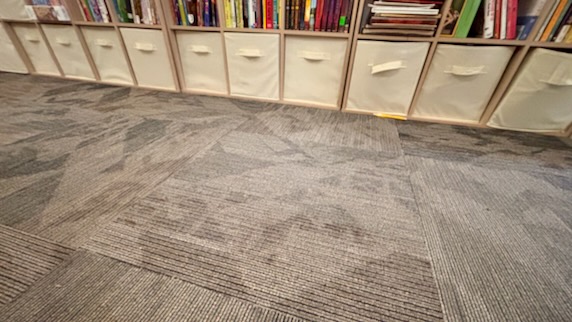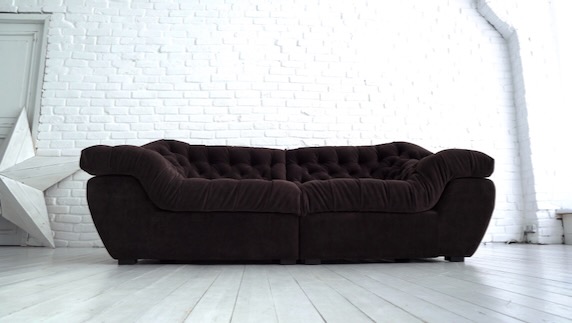
Carpet adds comfort and coziness to a home but is it environmentally safe? Courteys of Storyblocks.
When we moved into our home in 2009, the upstairs had been newly carpeted. Now, 16 years later, it was time for a refresh — especially with our dog and visits from our grand dogs.
I found a good looking neutral color with a subtle design that would work perfectly. I purchased it from the local home improvement store and scheduled the delivery that would arrive in two weeks.
Then I started reading about the actual material that would soon be in our bedrooms. Did we really want to be breathing in forever chemicals? I determined it would be mistake to bring in potentially cancer-causing elements into the house — harmful fibers containing polypropylene and formaldehyde made no sense.
I canceled the order and decided to do the research I should have done to begin with.
OFF-GASSING
Jonathan Kraatz is the executive director and CEO for the U.S. Green Building Council Texas Chapter. He says forever chemicals or VOCs (volatile organic compounds) are not only in carpet but in our clothes and furniture — so many of the things we bring into our homes.
As defined by the EPA, VOCs are compounds that have a high vapor pressure and low water solubility. Many are human-made chemicals that are used and produced in the manufacture of paints, pharmaceuticals, refrigerants, pesticides, building materials and furnishings. Concentrations of many VOCs are consistently higher indoors (up to 10 times higher) than outdoors. VOCs are responsible for the odor of scents and perfumes as well as pollutants. Some VOCs are dangerous to human health or cause harm to the environment, often despite the odor being perceived as pleasant, such as “new car smell.”
The new car smell that people seem to like, says Kraatz, is actually gasses that are emitted from various manufactured materials such as leather or plastic — known as “off gassing.”
“It’s always important to look at a material’s ‘health,’” says Kraatz. “This is what sustainable construction is all about.”
In fact, he adds a lot of architecture firms now have specialists who look at materials being used to determine their environmental impact.
MATERIAL EXPERTS
The American Instate of Architects (AIA) acknowledges that architects play a large role in the public’s health and well-being. The building materials an architect selects has the potential to affect the long-term health of all occupants.
Tricia Loe, president of Sustainable Concepts, advises clients on sustainable building practices. Although her experience is primarily commercial, she understands the concerns of both commercial and residential clients who want to work and reside in environments that are free of unhealthy materials.
Loe describes how her company works.
“The architect initially talks to the client who is interested in a healthy work place or LEED certification [the green building rating system developed by the Leadership in Energy and Environmental Design]. Then the architect brings us in.”
Loe, who also serves as the North Texas Chapter board chair of the US Green Building Council, says that she has a number of resources that she can consult for her commercial projects in regard to material health options.
For instance, she often goes to the Transparency Catalog to see if a building product has VOCs. A consumer can do this as well by creating a free account.
Consumers can use the Transparency Catalog to see if a building product has VOCs by creating a free account.
Carpets that claim to have high level stain resistance and repel animal urine may sound appealing to the consumer. However, according to Kraatz, the additional chemicals they contain may increase the potential for crushing — particularly with polyester — and specialized cleaning is often needed to maintain the carpet’s appearance. And then, there are the environmental repercussions, like off-gassing. Meanwhile, a 2023 peer-reviewed study showed that forever chemicals have no practical benefit in repelling water and stains.
In 1992, the Carpet and Rug Industry (CRI), created the Green Label program to set the industry standards. The program focused on eliminating VOCs that are present in carpet fabrics as well as in the accompanying adhesives and sealants. In the 2000s, CRI introduced the Green Label Plus program that set higher standards for IAQ (indoor air quality). The label let consumers know they are purchasing the very lowest emitting products available on the market.

Natural fibers are best, says Loe. Carpet manufacturers Mohawk, Shaw and Interface all carry Green Label products. Materials such as wool, jute, sisal or a wool blend work well.
In addition to Green Label Plus, the relatively new, OEKO-Tex, also alerts the consumer about ingredients in the textiles they are considering to bring into their homes.
The cost for green carpets, notes Loe, is more expensive but worth the cost.
Kraatz agrees.
“Carpets that are environmentally good generally tend to be more expensive. Natural fibers such as wool are pricier than plastics. Some carpets use recycled materials.”
OTHER CARPET CONSIDERATIONS
Another thing to consider is the composition of the carpet pad beneath the carpet as well as the tape of adhesive used. Adhesive dots are preferable.
Carpeting is available in broadloom or tiles. Broadloom is rolled out in large pieces. Carpet tiles are individual, pre-cut squares of carpet with a built-in backing that are installed as a modular flooring solution. The advantage of tile is that is easier to handle, install and repair. Carpet tiles can be mixed and matched in various colors and patterns to create custom designs and allow for the simple replacement of damaged or stained sections without replacing the entire floor. Loe notes that the tiles are easy to replace if they get damaged. Kraatz agrees: Carpet tiles are better because you don’t need to rip out all the carpet for repairs.
WOOD FLOORS AND AREA RUGS

Finally, one last option: consider installing wood floors and adding area carpets on top. Area carpets offer more options in natural fibers and have more choices in color. They are usually washable as well. And if you tire of it, they are easily changed out.
BUYER BEWARE
When it comes to the environmental safety of home building materials, Loe warns buyers that the United States is not as proactive as other parts of the world.
“In the US,” she says, “we have a system where a material has to be proven toxic before it is taken off market. In Europe, if a material is considered suspicious, it is immediately taken off market until proven carcinogenic or not.”
Lead paint, she notes, took 50 to 60 years to be labeled dangerous and taken off market.
MORE RESOURCES
The Environmental Working Group (EWG). EWG is nonpartisan nonprofit founded in 1993. It provides up-to- date research to help consumers make informed choices and live a healthy life in a healthy environment.
Healthy House on the Block with Amanda Klecker, a certified building biologist.
SixClasses.org is part of the Green Science Policy Institute. It covers chemicals known to harm human health and the environment. The six: PFAs, Antimicrobials, flame retardants, bisphenol and phthalates, solvents and metals.
Carpet & Rug Institute’s Green Label Plus
The architecture firm of Perkins and Will designs healthy buildings using healthy building products and has a variety of resources on its website. The Chicago-based firm has a Dallas studio.
Environmental Product Declaration (EPD) - similar to a food label. It tells the consumer what’s in the product, although it doesn’t say how much. An EPD for sustainability is a verified, transparent, third-party document that pinpoints a product's environmental impact throughout its entire life cycle.
